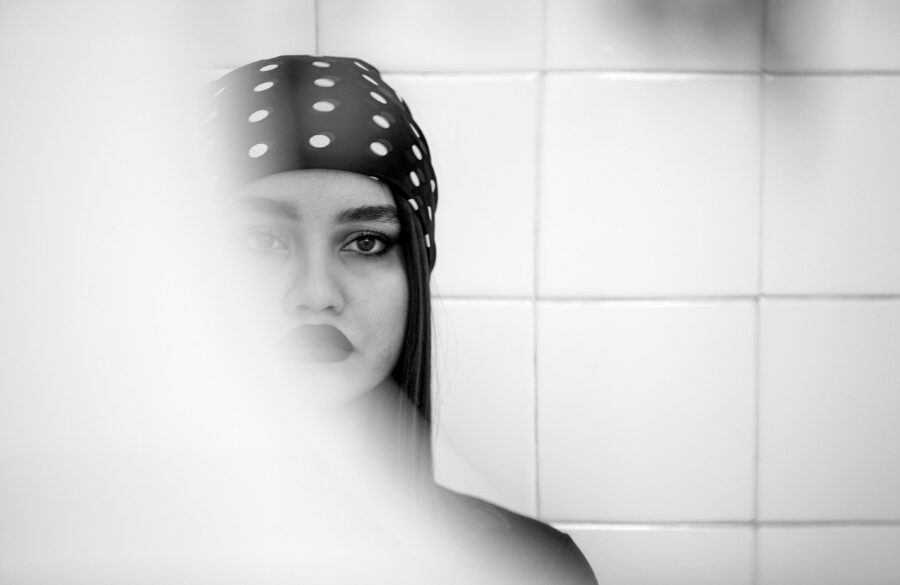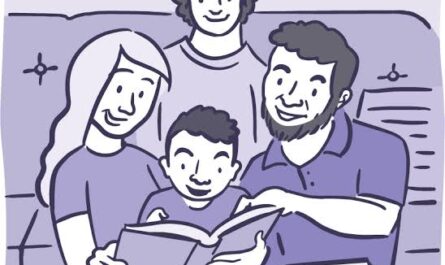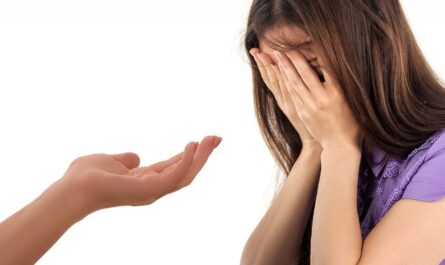Prelude: The Day the Mirror Blinked Back
I remember the exact morning my relationship with my reflection changed. I was twenty‑seven, standing in harsh, fluorescent bathroom light rehearsing an apology to a pimple and wishing my thighs would shrink by noon. But something snapped—not in anger, more like a tired elastic giving way. I realized I had outsourced my self‑worth to imaginary judges: glossy‑magazine editors I’d never meet, adolescent bullies who’d long forgotten my name, and algorithmic filters that flattened real faces into an uncanny sameness. I decided I was done.
What follows is part memoir, part toolkit—a series of practices I used to pry confidence away from commercial beauty scripts and place it back in my own hands. My journey is personal, yet the steps are adaptable; whether your insecurity centers on skin tone, body shape, hair texture, or aging lines, the underlying mechanics of liberation share striking overlap.
1 Tracing the Blueprint: Finding the Origins of My Beauty Beliefs
I began by mapping the sources of my aesthetic expectations. A childhood spent watching airbrushed soap operas taught me that heroines never sweated. A well‑meaning relative once pinched my cheeks and said, “Round face means you must always stay thin or you’ll look like a balloon.” Teachers rewarded tidiness—straight posture, ironed uniform, neatly braided hair—subtly equating order with virtue. These micro‑lessons merged into a blueprint that equated worthiness with visual compliance.
Writing down each memory, I noticed recurring themes:
- External Validation – Compliments were prized trophies; criticism felt like public sentencing.
- Scarcity Mind‑set – Beauty was portrayed as a limited resource: if someone else possessed it, there was less for me.
- Static Ideal – The blueprint suggested beauty was an end‑state, not a fluid, evolving expression.
Seeing the architecture on paper stripped it of mystique; I could now remodel rather than live in a house someone else designed.
2 Reframing the Language: From Judgment to Description
The next shift involved vocabulary. My self‑talk was laced with absolutes—“ugly,” “flaw,” “ruined.” Such words slammed shut curiosity, leaving no room for nuance. I practiced swapping them with descriptive, non‑moral terms:
- “Cellulite” became “texture.”
- “Wrinkles” became “story lines.”
- “Dark circles” became “evidence of late‑night creativity.”
At first this felt forced, like sticking smiley stickers on overdue bills. But linguistic habits shape neural pathways: the brain tags repeated terms as relevant, then hunts evidence to confirm them. Two months in, negativity spikes faded. My mind, starved of its usual insults, began to notice color variance in my irises, the architectural curve of collarbones, the way laughter created dimples. Beauty multiplied when I stopped policing it.
3 Sensory Alignment: Crafting a Multi‑Modal Confidence Ritual
Breaking free required anchoring new beliefs in the body, not just the mind. I built morning and evening rituals around the five senses:
Sight – I taped postcards of diverse faces—freckles, gap teeth, silver hair—around my mirror. My reflection mingled with theirs, teaching my retinas that variation is natural.
Sound – I replaced my alarm with a playlist of songs praising resilience and self‑love. Hearing Lizzo belt, “I’m my own soulmate,” before scrolling proved inoculation against social‑media critique.
Smell – I blended essential oils—bergamot, frankincense, and a hint of cedar—to spritz over clothes. The perfume became an olfactory anchor: one whiff triggered embodied confidence.
Touch – Weekly self‑massage with almond oil helped me meet my body through sensation rather than judgment. Kneading calves after a run, I marveled at muscle fibers rather than measuring circumference.
Taste – I adopted mindful eating: closing eyes on the first bite, describing flavors aloud, thanking farmers. Nourishment transformed from calorie math to sensory celebration.
4 Media Diet: Curating Inputs to Rewrite Norms
I conducted a social‑feed audit similar to clearing a cluttered fridge. Rules were simple:
- Accounts promoting a singular beauty archetype got unfollowed.
- Creators who showcased unfiltered skin, disabled bodies, trans joy, aging hair, or postpartum bellies stayed.
- For every influencer posting product links, I added one who offered philosophical or artistic content unrelated to looks.
Initial withdrawals were real; doom‑scrolling had been my mental chewing gum. Yet within weeks, my explore page reflected my new priorities: watercolor tutorials, astrophotography, book reviews. Beauty now appeared as creativity and curiosity, not just contour and crop tops.
5 Community Mirror: Surrounding Myself with Reflective Support
Confidence grows in relation to our environment. I sought communities that celebrated authenticity: a local “no‑makeup Monday” hiking club, a writing circle where vulnerability outranked polish, and an online forum for natural‑hair journeys.
Crucially, I practiced reciprocal affirmation—complimenting friends on their humor or tenacity rather than their eyeliner. Over time, they echoed the pattern back. Our collective dialogue shifted from “Do I look okay?” to “What adventure nourished your soul this week?” The communal mirror became less about reflection and more about projection—what we sent into the world through art, kindness, or innovation.
6 Embodied Movement: Redefining Fitness as Self‑Expression
My old exercise regimen hinged on punishment: treadmill minutes measured penance for a pastry. To sever that tie, I experimented with movement forms untethered to caloric thinking—Afro‑dance classes, paddle‑board yoga at dawn, roller‑skating under neon lights. Each session ended with a journal prompt: How did this feel in my body? When answers read “liberated,” “playful,” or “powerful,” I marked it a success regardless of step count.
Gradually, the mirror ceased being a verdict board; it became a documentary screen of experiences—mud spatters from trail rides, bruises from climbing sessions, sun‑lines from gardening. My body turned narrative rather than ornament.
7 Self‑Portraiture: Turning the Lens into a Tool
Photography once triggered self‑critique; angles and lighting seemed conspirators. I flipped the dynamic by initiating a monthly self‑portrait project. Rules: no filters, no posing to hide perceived flaws. Instead, I conveyed mood—serenity in sunrise light, defiance amid city graffiti, contemplation framed by autumn leaves.
Reviewing images over a year produced a visual diary of emotional landscapes. Wrinkles deepened; so did confidence radiance. I saw not a static face but a living canvas telling time’s tale. The camera became ally, not adversary.
8 Historical Perspective: Learning from Past Ideals
Reading art and fashion history revealed beauty’s fickleness: Rubenesque figures symbolized fertility; Victorian women swallowed arsenic for porcelain skin; 1990s heroin‑chic glamorized gauntness. Such volatility exposes modern standards as transient trends, not destiny. Recognizing this, I treat current ideals like passing weather—noticeable but not definitive.
9 Setting Boundaries: Politely Rejecting Beauty Policing
Liberation needed social boundaries. Practical scripts helped:
- To unsolicited diet commentary: “I’m focusing on listening to my body’s cues rather than restricting.”
- To age‑shaming jokes: “I view laugh lines as proof of a life well‑lived.”
- To product pushes: “I’m content with my routine, but thanks for thinking of me.”
These phrases protected my mental terrain without hostility, signaling new rules of engagement.
10 Celebration Milestones: Ritualizing Progress
Every quarter I hosted a solo “confidence date”:
- Review journal entries capturing mindset shifts.
- Revisit self‑portraits while sipping herbal tea, applauding emotional growth.
- Buy a symbolic gift—handmade jewelry or vintage book—honoring inner sparkle over external shimmer.
Ritualizing progress anchored intangible transformation into tangible memory, fueling momentum.
11 Handling Relapses: Compassion over Condemnation
Some mornings still invite old insecurities—under‑eye shadows after a sleepless night or social‑media rabbit holes inhaled at 2 a.m. Instead of berating myself for “backsliding,” I apply a three‑step triage:
- Acknowledge – “Hello, self‑doubt; I see you.”
- Investigate – “What triggered this? Am I overtired, overstimulated, or lonely?”
- Respond – Employ a grounding ritual: sensory walk, breathwork, or phoning a supportive friend.
Treating relapse as data, not doom, transforms setbacks into research for next‑time resilience.
12 Transferring Confidence from Self to Society
The ultimate test emerged when I mentored teenage girls in a creative‑writing workshop. Their chatter echoed my past: comparing waistlines and acne, measuring Instagram likes. Instead of lecturing, I modeled confidence—unfiltered face in fluorescent school lighting, vibrant mismatched clothes celebrating mood, not trends. We wrote poems describing bodies as ecosystems rather than objects: freckle constellations, thigh‑high riverbanks, heartbeat metronomes. Seeing their metaphors evolve from critique to reverence confirmed that personal liberation seeds cultural change.
Conclusion: Confidence as Continual Composition
Breaking free from beauty standards isn’t a one‑time jailbreak; it’s a lifelong jazz composition—riffing, revising, responding. My sheet music now prioritizes function over facade, sensation over surveillance, story over symmetry. Confidence, once outsourced, has relocated to an internal zip code modulated by sleep, creativity, and integrity rather than inches or pixels.
If my journey offers one takeaway, it is this: beauty standards are social contracts. Contracts can be renegotiated or declined. By tracing origins, reframing language, aligning senses, curating media, building community, and ritualizing self‑celebration, anyone can draft a new agreement—one that honors the body as a dynamic collaborator, not a static billboard. The world may still broadcast homogenized ideals, but with personal sovereignty reclaimed, those signals fade to background static, while the inner soundtrack of self‑defined confidence plays on, clear and resolute.
In the end, defining confidence on your own terms functions like fitting a bespoke lens over the world: once adjusted, every billboard, algorithm, or back‑handed compliment passes through clarified glass. The lens doesn’t erase external noise, but it shrinks each message to scale, filtering out the sensational and magnifying the authentic. Through it you recognize that the skin, hair, and curves you inhabit today are not raw materials awaiting approval—they are already finished works continuously curating new brushstrokes of experience. When confidence arises from that recognition, it becomes portable; you carry it into boardrooms, friendships, and quiet Sunday afternoons alike. And because authentic confidence is inherently generative, everyone who meets your steady gaze receives silent permission to craft a lens of their own, slowly tipping collective culture away from rigid aesthetics toward radical, inclusive self‑regard.



